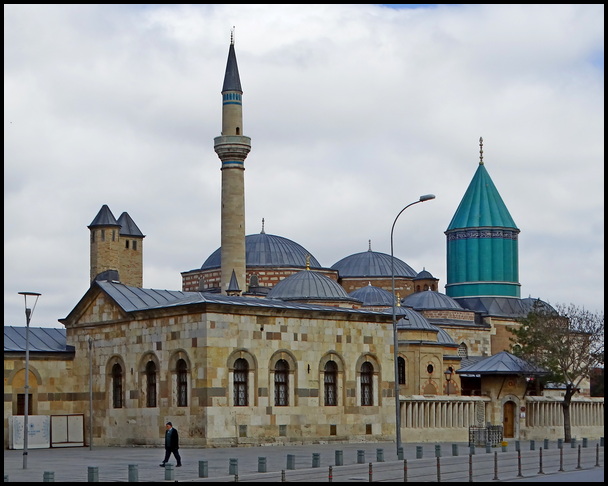
Introduction to Konya – Turkey
Konya is a large city in south central Turkey, situated on the Anatolian Plateau and a few hours inland from the southern Mediterranean coast. It’s Turkey’s 7th largest city, with a population of over 2 million, and is capital of Konya Province.
Konya has an extremely long history dating all the way back to 3000s B.C. But it is most famous as the final home of the Persian Islamic scholar/poet/mystic, Rumi, and his Whirling Dervishes sect of Islam, that dates back to the mid 1200s AD.
Besides a museum complex devoted to Rumi and Whirling Dervish shows at the nearby Culture Center, Konya also has many gorgeous historic mosques, several small specialty museums, a beautifully-renovated historic district full of Ottoman architecture, and a lovely hilltop city park full of roses in summer months.
Konya is well worth visiting for a few days and, in fact, is an important stop for many group tours of Turkey due to the Whirling Dervishes show and museum.
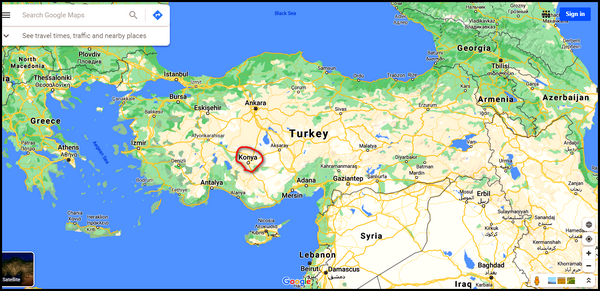
Location of Konya
As noted above, Konya is situated on the vast Anatolian Plateau that takes up much of central Turkey. More specifically, Konya is located on the southwestern edge of the plateau at an elevation of about 1000 M / 3000 ft. This generally keeps the city slightly cooler in summer than the broiling Mediterranean coast to the south.
Konya is a 3-4 hour drive north from the Mediterranean Sea, depending on which point of the coast you start from. Between the coast and Konya stretces a vast sea of the rugged Taurus Mountains, all gray stone and dark-green pine forests. Many routes cross the mountains between the coast and the city, but all feature stunning mountain scenery.
Konya is also situated about three hours south of Ankara, Turkey’s capital city, and 7-6 hours from Istanbul (or a 1-hour flight).

Brief History of Konya
As noted above, the Konya region has been inhabited since the 3rd millenium BC, during the Copper Age, based on archeaological evidence discovered in the area. Over the centuries, it’s been inhabited by many diverse tribes and empires, including the Hitites in the 1500s BC. Later came Phrygians, Cimmerians, Persians, Greeks, Romans, Byzantines, Seljuk Turks and Ottoman Turks.
Traces of many of these civilizations are found in Konya, either in archeaological sites, museums and/or within the city streets. Most notable today are Seljuk and Ottoman mosques and architecture.
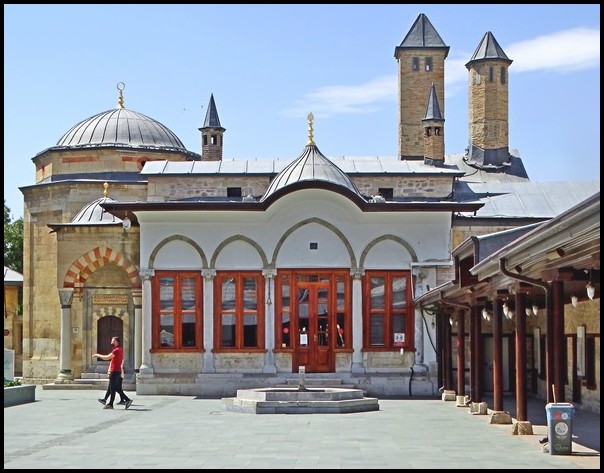
Layout & Geography of Konya
Like many modern cities in Turkey, Konya has a central historic district, where the original city was founded. The modern city spreads out from there, consisting almost entirely of boxy, non-descript 4-10 story modern apartment buildings, going on and on for miles along city streets and highways.
Konya’s beautiful historic district is rather large, consisting of dozens of blocks of entact wooden Ottoman buildings set along cobblestone roads and alleys. Nowadays it’s a bustling shopping district, filled with every kind of shop and merchandise imaginable, from gold jewelry to sports shoes. Interspersed with all the shops are dozens of Turkish tea shops, cafes and restaurants.
Konya is more or less entirely flat, being set on the Anatolian Plateau. However, just west of the historic district is a round domed hill, that’s been made into the beautiful shady Alaaddin Park. Historic Alaaddin Mosque complex is also set on the hill. In summers the entire hilltop is immersed in a vast tract of roses.
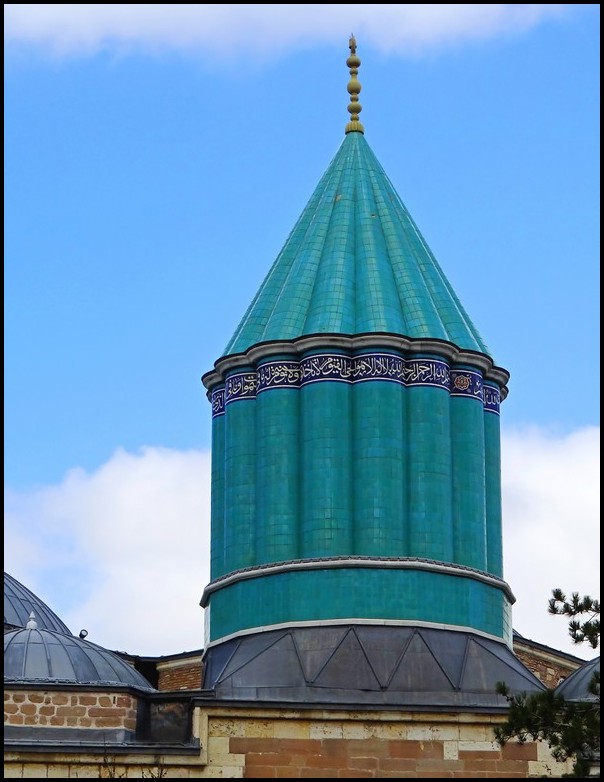
Just east of the historic district is Konya’s main attraction: Mevlana Museum. ‘Mevlana’ means ‘our master’ in Persian, so Rumi is often referred to as Mevlana. The complex contains Rumi’s mausoleum, several other historic buildings, informational plaques about Rumi and the Whirling Derivish sect, rose gardens and a gift shop/cafe.
Nearby is the modern Mevlana Cultural Center, where shows of Whirling Dervishes are open to the public one or two nights per week (quite unfortunately, the shows have been suspended during the Covid pandemic. Presumably, they will start after the pandemic gets under control).
Next to Mevlana Museum is the huge and very striking Sultan Selim Mosque. Across the road is the vast park-like main city cemetery.
Scattered through the historic district and on its outskirts are several small but interesting specialty museums and many beautiful historic mosques.
Quite fortunately, all of Konya’s attractions are situated in and around the central historic district. Dozens of hotels in all price ranges are also located in the same area, as are restaurants and cafes. This all makes visiting Konya very easy. Everything is in easy walking distance.
Konya’s Main Claims to Fame
As explained above, Konya’s main points of fame and the reason for most tourists to Konya include Mevlana Museum and the Whirling Dervishes performances.
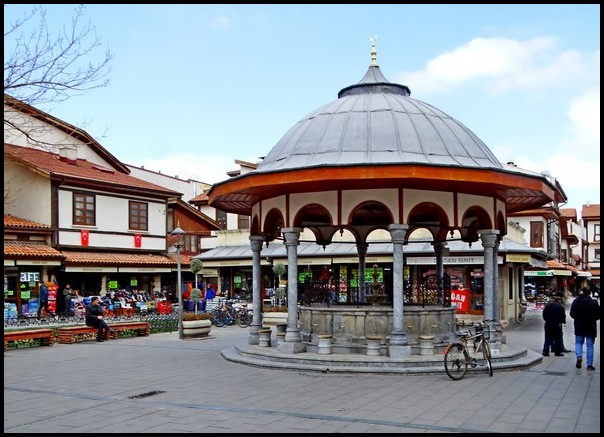
Konya’s other worthwhile attractions
Historic District
As explained above, Konya’s beautiful historic district features blocks and blocks of handsome, beautifully-renovated Ottoman architecture and cobblestone streets. It’s well worth wandering around, stopping for a cup of Turkish tea or coffee at small chid-size table & chair sets, enjoying a tasty Turkish meal.
Since it’s right next to Mevlana Museum, the historic district is an easy and relaxing spot to rest and rejuvenate while sightseeing.
Alaaddin Park & Mosque
As noted above, this shady hilltop park is situated just west of Mevlana Museum and the historic district. It’s another great place to relax, escape the city and take in panoramic views over the city.
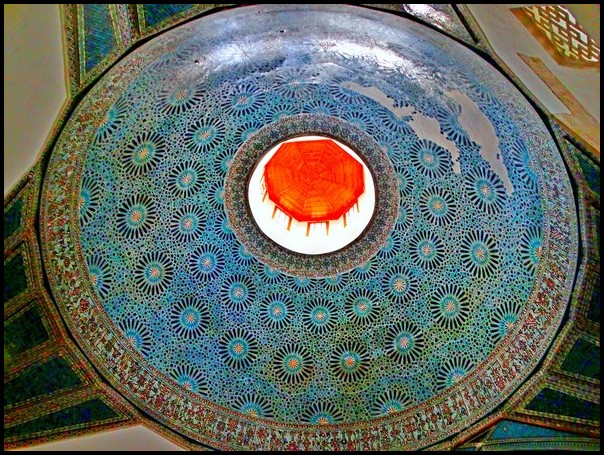
Museums
One great bonus about Konya’s museums is that almost all are free, including the famous Mevlana Museum! The few that charge entry fee ask for a mere 12.50 lira / about $1.50 US.
They’re all quite small, featuring one specific topic. They each require only an hour or so to visit. Maybe only 30 minutes for people who like to glide through, or up to two hours for those who study museum pieces in depth. It’s realistic to visit 3-5 of these museums in one day, perhaps even adding a mosque or two.
Ataturk House Museum
This 2-story historic home was built in 1912 and later gifted to President Ataturk, founder of the Turkish Republic, by Konya citizens in appreciation of his leadership. It later served as the governor’s home for over 40 years. The rooms display Ataturk’s personal items and photographs of the beloved president.
Ethnography Museum
This museums has displays of carpets, embroidery & linens, clothing, household items, swords, metalworks, ceramics and other items of historic daily life in the Konya area.
Archeaological Museum
This museum displays items from many different archaeologic sites in the region, dating from pre-history through Greek and Roman stone statues, columns and carvings.
Stone and wood works Museum
This museum is housed in a historic Seljuk mosque dating to the mid 1200s that features an intricately-carved stone entrance. The museum displays carved stone and wood works from the Seljuk, Karamadid and Ottoman eras.
Karatay Madresse Museum (Turkish wood and stone carvings)
This museum is housed in a small historic stone madresse (Islamic school) Math a stunning domed ceiling covered in intricately-patterned tiles. The museum is devoted to Turkish tiles from the Seljuk and Ottoman eras, along Math explanations of various tile making processes.
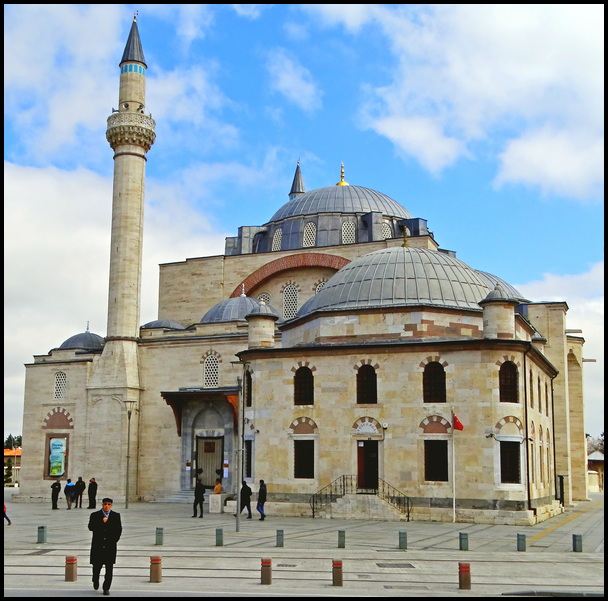
Mosques
Central Konya has dozens of beautiful historic mosques scattered about. Rather surprisinly, each one has a different architectural style and very different interiors. Therefore, travelers interested in architecture and/or mosques, should visit as many as they can until sated.
The three most impressive, however, are the following. Be sure to visit these three if none others.
Sultan Selim Mosque
This huge square stone mosque with two tall minarets is located adjacent to Mevlana Museum. The handsome Ottoman-era mosque has a very striking presence, partly due to its huge size and stunning design.
The beautiful interior is equally massive, featuring all-white walls and central dome decorated in a delicate Ottoman patterns primarily in blue and golden colors.
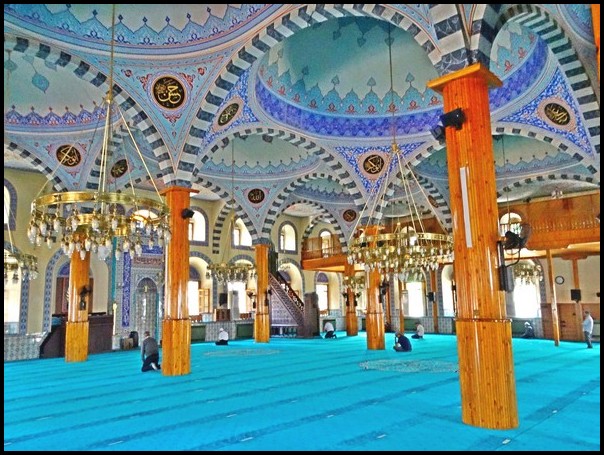
Kapu Mosque
Kapu Mosque is located in the middle of the historic district. It’s rather plain rectangular exterior shape gives way to an incredibly beautiful interior design of multiple domes decorated in intricately-patterned blue tilework, held up by golden wood pillars and stone-block arches in alternating white & black stone. This is one of the most beautiful mosques I’ve personally seen in the world.
Alaaddin Mosque
This Seljuk mosque complex is located on Alaaddin hill and consists of a large main mosque hall, an exterior stone courtyard and two stone towers. The understated but beautiful interior features rows upon rows of unpolished marble pillars topped by arched brickwork holding up a rich wood ceiling.
Summary
Konya is a great city to visit for travelers interested in historic Turkish culture, architecture and mosques. Konya’s unique claims to fame are the Mevlana Museum with Rumi’s mausoleum and authentic Whirling Dervish performances that are open to the public.
Konya’s beautiful Ottoman historic district, its plentiful & diverse mosques and several small specialty museums are all situated within walking distance of each other in central Konya, making it an easy place to explore.
========================
You might also like:
All About Turkey’s Gorgeous Turquoise Coast
=============================







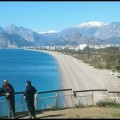



 Hi! I'm Lash, an American nomadic world traveler who's been traveling solo since 1998. I’m passionate about traveling the world nomadically and then sharing it all with you. I hope to inspire you to travel the world, to entertain you with tales from the road, and to help you reach your travel dreams. Welcome!
Hi! I'm Lash, an American nomadic world traveler who's been traveling solo since 1998. I’m passionate about traveling the world nomadically and then sharing it all with you. I hope to inspire you to travel the world, to entertain you with tales from the road, and to help you reach your travel dreams. Welcome! 




1 pings
Introduction to Tokat – Turkey - LashWorldTour
2021/07/09 at 12:58 am (UTC 8) Link to this comment
[…] Introduction to Konya […]